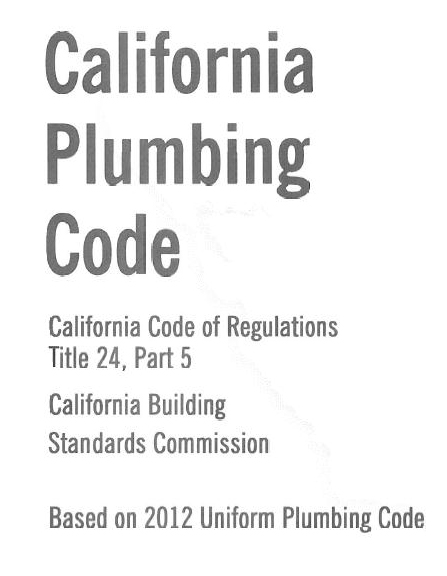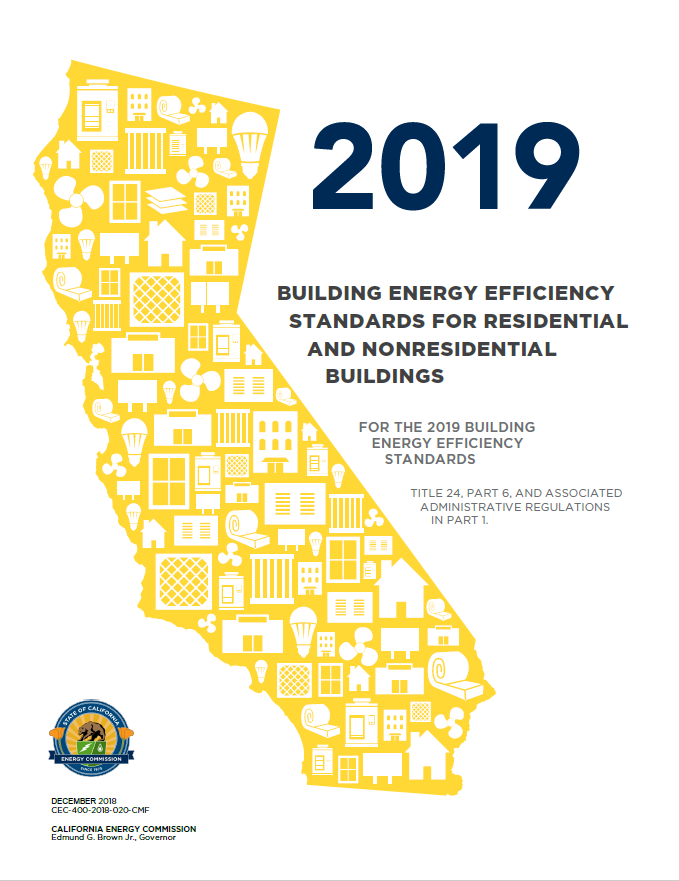California Plumbing Code
The California Plumbing Code is a set of regulations and standards that govern the installation, maintenance, and use of plumbing systems in the state. It is enforced by the California Building Standards Commission and is based on the California Building Standards Code.
The purpose of the California Plumbing Code is to ensure the safety and health of the public by regulating the design, construction, and installation of plumbing systems. It covers everything from the materials used in plumbing systems to the proper installation of fixtures and appliances.
Some notable requirements of the California Plumbing Code include the use of lead-free pipes and fittings, backflow prevention devices, and proper ventilation for plumbing fixtures. It also addresses issues such as water conservation and energy efficiency in plumbing systems.
It is important for homeowners and contractors to be familiar with the California Plumbing Code in order to comply with the regulations and avoid potential fines or penalties. Any new construction or major renovation project in California must adhere to these standards.
California Building Standards Code
The California Building Standards Code is a comprehensive set of regulations that cover all aspects of building construction in the state. It includes requirements for plumbing, electrical, mechanical, and structural systems, among others.
The California Building Standards Code is regularly updated to reflect changes in building technology and safety standards. It is divided into 12 parts, with Part 5 specifically covering plumbing regulations. This part includes the California Plumbing Code and the California Energy Code, which addresses energy efficiency in plumbing systems.
Compliance with the California Building Standards Code is mandatory for all new construction and major renovation projects in the state. Failure to comply with these standards can result in fines and delays in obtaining building permits.
California Water Code
The California Water Code is a collection of laws that govern the management and use of water resources in the state. It covers a wide range of issues, including water rights, water quality, and water conservation.
The California Water Code is administered by the California Department of Water Resources and is regularly updated to reflect changes in water management practices and environmental regulations. It also works in conjunction with the California Environmental Protection Agency to ensure the protection of the state's water resources.
Some key provisions of the California Water Code related to plumbing include regulations for the treatment and disposal of wastewater, as well as requirements for the installation of backflow prevention devices to prevent contamination of the public water supply.
California Health and Safety Code
The California Health and Safety Code is a set of laws that aim to protect the health and safety of the public. It covers a wide range of topics, including environmental health, food and drug safety, and housing standards.
Several sections of the California Health and Safety Code are relevant to plumbing regulations. For example, Section 17920.3 requires all buildings to have a safe and sanitary water supply, while Section 116775 addresses the proper disposal of sewage and wastewater.
Compliance with the California Health and Safety Code is essential for maintaining the health and well-being of the public. Failure to adhere to these regulations can result in fines and penalties, and in some cases, even legal action.
California Code of Regulations
The California Code of Regulations is a compilation of all the administrative regulations adopted by state agencies. It includes the California Plumbing Code and other building standards, as well as regulations for various industries and professions.
The California Code of Regulations is regularly updated to reflect changes in laws and regulations. It is divided into 28 titles, with Title 24 specifically covering building and safety regulations. This title includes the California Building Standards Code and the California Plumbing Code.
Compliance with the California Code of Regulations is mandatory for all businesses and individuals operating in the state. It is important to stay updated with any changes or amendments to these regulations in order to remain in compliance and avoid potential penalties.
California Department of Housing and Community Development
The California Department of Housing and Community Development (HCD) is responsible for ensuring the accessibility, affordability, and quality of housing in the state. It works in conjunction with local governments to enforce building and safety standards, including plumbing regulations.
The HCD also offers resources and assistance to homeowners and contractors to help them understand and comply with building codes and regulations. This includes providing training and education on plumbing standards and requirements.
Homeowners and contractors can contact the HCD for information and guidance on plumbing regulations and standards, as well as to report any violations or concerns.
California Department of Water Resources
The California Department of Water Resources (DWR) is responsible for managing and protecting the state's water resources. It works to ensure a reliable supply of clean water for drinking, irrigation, and other uses.
The DWR also plays a role in regulating plumbing systems to ensure the safe and efficient use of water resources. This includes overseeing the installation and maintenance of irrigation systems, as well as addressing issues such as water conservation and drought management.
Homeowners and contractors can contact the DWR for information and resources related to plumbing regulations and water management in the state.
California Department of Public Health
The California Department of Public Health (CDPH) is responsible for promoting and protecting the health of the public. It works to prevent and control diseases, promote healthy behaviors, and ensure safe and clean environments.
The CDPH is involved in regulating plumbing systems to protect the public from potential health hazards. This includes enforcing regulations for the treatment and disposal of wastewater, as well as monitoring the quality of drinking water.
Homeowners and contractors can contact the CDPH for information and resources related to plumbing regulations and water quality in the state.
California Environmental Protection Agency
The California Environmental Protection Agency (CalEPA) is responsible for protecting the environment and public health in the state. It oversees several departments and boards, including the California State Water Resources Control Board.
The CalEPA works to ensure the safe and responsible management of water resources, including the enforcement of regulations for plumbing systems. It also works to address issues such as water pollution and contamination.
Homeowners and contractors can contact the CalEPA for information and resources related to plumbing regulations and environmental protection in the state.
California State Water Resources Control Board
The California State Water Resources Control Board (SWRCB) is responsible for regulating water resources in the state. It works to protect and manage water quality, as well as oversee the use and allocation of water.
The SWRCB is involved in regulating plumbing systems to prevent contamination of the public water supply. This includes enforcing regulations for backflow prevention and proper disposal of wastewater.
Homeowners and contractors can contact the SWRCB for information and resources related to plumbing regulations and water quality in the state.
The Impact of California's Kitchen Sink Regulation on House Design

Understanding the California Kitchen Sink Regulation
 Kitchen sinks
are an essential part of every home. They are not just a functional necessity, but also one of the most utilized fixtures in a household. However, in recent years, the state of California has implemented a
kitchen sink regulation
that has caused quite a stir in the realm of
house design
. This regulation, which was put into effect in 2018, requires all
kitchen sinks
to have a minimum of 1.5 inches of space between the bottom of the sink and the countertop. This may seem like a small change, but it has had a significant impact on
house design
and has left many homeowners and designers questioning the reasoning behind it.
Kitchen sinks
are an essential part of every home. They are not just a functional necessity, but also one of the most utilized fixtures in a household. However, in recent years, the state of California has implemented a
kitchen sink regulation
that has caused quite a stir in the realm of
house design
. This regulation, which was put into effect in 2018, requires all
kitchen sinks
to have a minimum of 1.5 inches of space between the bottom of the sink and the countertop. This may seem like a small change, but it has had a significant impact on
house design
and has left many homeowners and designers questioning the reasoning behind it.
The Purpose Behind the Regulation
 The California
kitchen sink regulation
was implemented with the intention of promoting
water conservation
and
hygiene
. The extra space between the sink and countertop allows for easier cleaning and better
sanitization
of the sink area, reducing the risk of bacteria and germs. Additionally, the regulation aims to conserve water by preventing any overflow from the sink onto the countertop, which can lead to wastage.
The California
kitchen sink regulation
was implemented with the intention of promoting
water conservation
and
hygiene
. The extra space between the sink and countertop allows for easier cleaning and better
sanitization
of the sink area, reducing the risk of bacteria and germs. Additionally, the regulation aims to conserve water by preventing any overflow from the sink onto the countertop, which can lead to wastage.
The Impact on House Design
 While the intentions of the regulation may be noble, it has had a significant impact on
house design
. Many homeowners and designers have found it challenging to incorporate the 1.5-inch gap into their
kitchen
plans, especially in smaller spaces. This has led to a decrease in the popularity of undermount sinks, which provide a sleek and seamless look but are not compatible with the regulation. Instead, many are opting for drop-in or farmhouse sinks, which have a visible rim that creates the required gap.
While the intentions of the regulation may be noble, it has had a significant impact on
house design
. Many homeowners and designers have found it challenging to incorporate the 1.5-inch gap into their
kitchen
plans, especially in smaller spaces. This has led to a decrease in the popularity of undermount sinks, which provide a sleek and seamless look but are not compatible with the regulation. Instead, many are opting for drop-in or farmhouse sinks, which have a visible rim that creates the required gap.
Adapting to the Regulation
 Despite the initial challenges, designers and homeowners are finding creative ways to adapt to the
kitchen sink regulation
. Some are incorporating the gap by using materials such as wood, metal, or stone to create a raised platform for the sink to sit on, while others are utilizing innovative sink designs that incorporate the gap seamlessly.
Despite the initial challenges, designers and homeowners are finding creative ways to adapt to the
kitchen sink regulation
. Some are incorporating the gap by using materials such as wood, metal, or stone to create a raised platform for the sink to sit on, while others are utilizing innovative sink designs that incorporate the gap seamlessly.
In Conclusion
 The
California kitchen sink regulation
has caused a significant impact on
house design
, but it has also sparked creativity and innovation in the industry. While it may have its challenges, the regulation ultimately promotes
water conservation
and
hygiene
and encourages designers and homeowners to think outside the box when it comes to
kitchen
design.
The
California kitchen sink regulation
has caused a significant impact on
house design
, but it has also sparked creativity and innovation in the industry. While it may have its challenges, the regulation ultimately promotes
water conservation
and
hygiene
and encourages designers and homeowners to think outside the box when it comes to
kitchen
design.
























.webp)
























































































